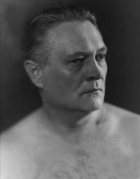| |

For more on his work:
here and
here
|
|
alén diviš
Alén Diviš (1900–1956) was born near the Bohemian town of Poděbrady. Moving to Paris in 1926 to devote himself fully to his art, he came into contact
with both French artists and the Czech expatriate community, forming a close friendship with the composer Bohuslav Martinů. He
helped to set up the House of Czechoslovak Culture in Paris as a response to the 1939 German occupation of Czechoslovakia, and when France fell,
Diviš and others from the House (such as Adolf Hoffmeister) were arrested and charged with espionage. He spent the next six months in solitary confinement in La Santé Prison.
Though cleared of the charges, Diviš spent another year and a half being shunted through concentration and internment camps in France, Morocco, and Martinique before
eventually escaping and making his way to New York. His work from this period is often a mix of dark dreams and hallucinatory horror that incorporates
the graffiti he remembered from the walls of his prison cell. As such it came to be associated with Art Brut. Diviš returned to Czechoslovakia in 1947 and
was starting to achieve some renown: the publication of his prison memoirs and an exhibition of his art in February 1948. Unfortunately, this was also the
month the Communist's seized power, and Diviš once again found himself pushed to the margins, destitute and isolated. He went into internal exile and
focused on creating artwork to A Bouquet and Edgar Allan Poe’s short stories as well as dark religious imagery. He died in 1956 virtually forgotten.
Interest in his work was not revived until after the Communist regime was ousted in 1989, and over the past twenty years new exhibitions and publications have followed.
|
|
 |
|

published by TSP:
A Bouquet
|